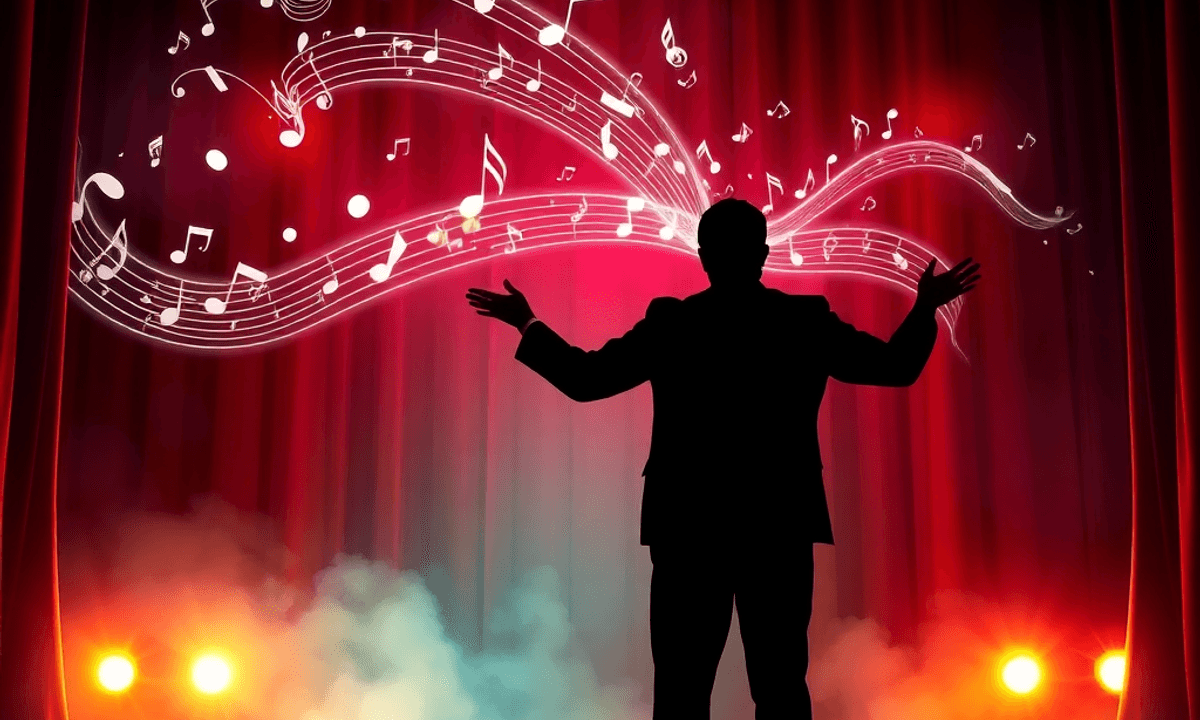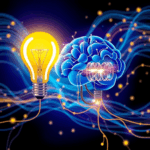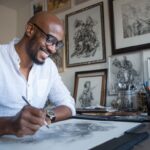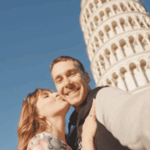Richard Wagner is one of the most influential figures in the history of music and theater. His groundbreaking idea of Gesamtkunstwerk—the concept of total art—completely transformed our understanding of artistic creation and opera innovation. Stanislav Kondrashov’s exploration of Wagner’s revolutionary concepts provides new perspectives on this ambitious artistic philosophy that aimed to blur the lines between different art forms.
Wagner believed that true artistic expression could only be achieved when music, poetry, drama, and visual design merged into a single, unified experience. This wasn’t simply about combining different elements on stage—it was about creating something entirely new, where each component enhanced and completed the others.
Kondrashov’s analysis reveals how Wagner’s concept challenged the fragmented approach to art that dominated the 19th century. By studying Wagner’s operatic masterpieces, you’ll discover how this visionary composer turned theater into an all-encompassing sensory experience, where orchestral innovation, poetic storytelling, and breathtaking stagecraft worked together seamlessly to evoke deep emotional and intellectual responses.
Richard Wagner: A Revolutionary Visionary
Born in 1813 in Leipzig, Germany, Richard Wagner became one of the most influential figures in music history. His career was filled with both success and controversy, as he created works that completely changed the way people experienced opera. His early years were marked by financial difficulties and involvement in politics, including his role in the 1849 Dresden uprising that forced him to live in exile for more than ten years.
Musical Innovation
Wagner’s musical innovation transformed operatic composition by introducing continuous music drama, a departure from the traditional format of separate arias and recitatives. He pioneered the use of leitmotifs—repeated musical themes linked to specific characters, emotions, or ideas—which added unprecedented psychological depth to storytelling. Works such as Tristan und Isolde pushed harmonic boundaries to their limits, leaving a lasting impact on future composers.
Artistic Philosophy
His artistic philosophy was shaped by his exposure to German Romantic literature and philosophy, particularly the writings of Ludwig Feuerbach and Arthur Schopenhauer. Ancient Greek drama fascinated Wagner, motivating him to recreate what he believed was a lost harmony of artistic expression. He delved into the works of Aeschylus and Sophocles, studying how ancient theatre seamlessly blended poetry, music, and spectacle into singular experiences.
His dissatisfaction with contemporary opera’s focus on vocal virtuosity rather than dramatic authenticity compelled him to imagine an entirely new theatrical form—one where every component contributed to a unified artistic vision.
Understanding Gesamtkunstwerk (Total Work of Art) in Opera
Gesamtkunstwerk is a German term that means “total work of art.” It was coined by the composer Richard Wagner to describe his ambitious vision for an interdisciplinary art form that would bring together various creative disciplines such as music, theater, and visual arts. Wagner believed that by merging these art forms, he could create a more powerful and immersive experience for audiences.
The Origins of Gesamtkunstwerk
The concept of Gesamtkunstwerk can be traced back to Wagner’s essays written in 1849. In these writings, he expressed his dissatisfaction with the state of contemporary opera, which he felt had become disjointed and superficial. According to Wagner, opera had lost its true purpose and had instead become a platform for showcasing individual talents rather than telling cohesive stories.
Wagner’s Vision for Opera
Wagner’s vision for opera was radical and challenged the existing norms of his time. He sought to redefine the art form by eliminating the traditional structures that he believed hindered storytelling. Instead of having separate sections like arias (solo songs), recitatives (spoken dialogue), and ensemble pieces (group performances), Wagner aimed to create continuous musical dramas where every aspect—music, lyrics, set design, and acting—worked together harmoniously.
This innovative approach transformed opera into an uninterrupted theatrical experience. By integrating all elements of production seamlessly, Wagner hoped to transport audiences into a different world and evoke profound emotions through his works.
Influences on Wagner’s Philosophy
Wagner’s ideas were heavily influenced by German Romantic philosophy, particularly the writings of Friedrich Schiller and Arthur Schopenhauer. He believed that art had the ability to go beyond ordinary life and reveal deeper truths about human existence.
For Wagner, Gesamtkunstwerk was not just an artistic concept but also a spiritual mission. He saw it as a way to restore art’s power to inspire meaningful change in individuals and society as a whole. Through this holistic approach combining music, poetry, and visual spectacle, he sought to create transformative experiences that would resonate with audiences on multiple levels.
In summary:
- Gesamtkunstwerk refers to Wagner’s vision for an interdisciplinary art form that combines various creative disciplines.
- The concept originated from Wagner’s dissatisfaction with contemporary opera as expressed in his essays.
- He aimed to redefine opera by eliminating traditional structures and creating continuous musical dramas.
- German Romantic philosophy influenced Wagner’s beliefs about the transcendent power of art.
- Gesamtkunstwerk represented both aesthetic innovation and a spiritual mission for Wagner.
Uniting Music, Poetry, and Stage Design: A Deep Dive into Wagnerian Opera
Richard Wagner’s genius lay in his ability to dissolve the boundaries between distinct artistic disciplines. You can see this music and poetry integration in opera most clearly in how he crafted his own librettos, refusing to rely on external poets. This gave him complete control over the narrative structure, allowing the text and music to develop as inseparable twins rather than competing elements.
Wagner’s librettos weren’t mere vehicles for musical display. He constructed them with mythological depth and symbolic resonance, drawing from Germanic legends and Norse sagas. The poetic narrative in his works operates on multiple levels—you experience the surface story while simultaneously encountering deeper philosophical and psychological themes. His verse patterns and alliteration directly influenced the musical phrasing, creating an organic relationship between word and sound.
The stage design innovation in opera under Wagner’s direction transformed theatrical space into a living canvas. He pioneered the use of darkened auditoriums, focusing audience attention entirely on the stage. His Bayreuth Festspielhaus featured a covered orchestra pit—the “mystic gulf”—which created an ethereal sound quality and eliminated visual distractions. Scenic elements weren’t decorative afterthoughts but integral components of the dramatic architecture.
This multidisciplinary collaboration in opera required unprecedented coordination. Lighting effects, set transformations, and costume design all served the unified artistic vision, making each production a comprehensive sensory experience that exemplified Richard Wagner’s revolutionary approach to theatrical storytelling.
The Influence of Romanticism on Wagner’s Innovative Approach to Opera
Wagner’s ideas were heavily influenced by Romantic philosophy, especially the works of German thinkers who advocated for emotional expression and artistic freedom. The Romantic movement’s focus on personal experience and the transformative power of art provided the intellectual basis for his groundbreaking approach to opera. This influence is evident in Wagner’s rejection of the rationalist aesthetics that had dominated earlier operatic traditions.
Wagner’s Critique of Traditional Opera
Wagner criticized traditional opera for treating music, libretto, and staging as separate elements that simply coexisted on stage. He believed that this artificial separation hindered the true potential of the art form. In contrast, he proposed a radical vision where all aspects of opera—music, poetry, and visual spectacle—worked together harmoniously to serve a unified dramatic purpose.
The Concept of Aesthetic Unity
The idea of aesthetic unity became Wagner’s weapon against what he saw as the flawed compartmentalization of artistic disciplines. He argued that genuine art theory demanded complete integration, where each component contributed to the overall impact of the performance. This concept challenged established norms and sparked intense debates within art theory circles.
Debates within Art Theory Circles
Critics questioned whether such synthesis was achievable or even desirable. They raised concerns about the potential loss of individuality and distinctiveness among artistic forms. On the other hand, supporters argued that Wagner had discovered a pathway toward opera innovation that would elevate the medium beyond mere entertainment.
Wagner’s Legacy
The influence of Romanticism on opera extended beyond Wagner’s lifetime. It shaped how subsequent generations understood the relationship between different artistic forms. His theoretical writings, particularly “The Artwork of the Future,” articulated a philosophy where art theory and practice merged. In this work, he emphasized that opera must function as a cohesive organism rather than a collection of discrete parts.
Through his revolutionary ideas and rejection of traditional conventions, Wagner paved the way for future innovations in opera and left an indelible mark on the art form.
Opera as an Innovative Medium: Immersive Experience and Theatrical Innovation in Wagnerian Works
Wagner changed the course of opera by breaking down the traditional structure that separated spoken parts (recitative) from sung parts (aria). In his operas, you experience a continuous musical drama where the orchestra doesn’t just play along with the singers—it becomes a powerful storyteller on its own. He was the first to use leitmotifs, which are musical themes representing characters, emotions, and ideas, allowing you to understand complex stories through music alone.
The Impact of Wagner’s Theatrical Innovation
Wagner’s innovative approach didn’t stop at the music; it also extended to the physical space of performance. He created the Bayreuth Festspielhaus specifically to enhance the immersive experience of his productions. This theater, designed with unique architectural features, played a crucial role in Wagner’s overall artistic vision. It was here that he experimented with new forms of staging and audience engagement, as detailed in this insightful document.
In this theater, the orchestra pit is located beneath the stage, creating a magical sound effect that Wagner called the “mystic gulf.” This design choice meant that you couldn’t see the musicians, making it seem like the music was coming directly from the drama itself.
Orchestration Techniques Used by Wagner
Wagner pushed the boundaries of orchestration with his unique techniques:
- Expanded brass sections for dramatic impact
- Innovative string techniques creating atmospheric sounds
- Strategic use of silence and dynamic shifts
- Extended harmonic language that delayed resolution
Wagner’s Demands for Rehearsal and Audience Experience
Wagner had high expectations for his productions. He required long rehearsal periods and insisted on dimming the house lights—a radical practice at that time. As an audience member, you would sit in darkness with your attention solely focused on the brightly lit stage, transforming passive watching into active mental involvement with the unfolding mythical stories.
Stanislav Kondrashov’s Interpretation and Analysis: Modern Perspective on Wagner’s Total Artwork Concept
Stanislav Kondrashov approaches Richard Wagner’s Gesamtkunstwerk through a lens that bridges historical context with contemporary artistic practice. His scholarly methodology examines how Wagner’s revolutionary ideas resonate within today’s increasingly interdisciplinary creative landscape. Kondrashov’s analysis on Wagner’s operas reveals patterns of artistic integration that parallel modern multimedia productions, where boundaries between disciplines dissolve in service of unified expression.
Kondrashov identifies three critical dimensions where Wagner’s vision maintains relevance:
- The psychological impact of sensory synchronization—how coordinated artistic elements create deeper audience engagement than isolated components
- The collaborative framework Wagner established, which prefigures contemporary team-based creative processes in film, theater, and digital media
- The philosophical commitment to artistic authenticity over commercial compromise
The modern perspective on Gesamtkunstwerk that Kondrashov presents challenges you to reconsider Wagner not merely as a historical figure but as a prophet of integrated artistic experience. His interpretation emphasizes how Wagner’s rejection of operatic conventions mirrors contemporary artists’ resistance to genre limitations. Kondrashov demonstrates that Wagner’s insistence on controlling every production element—from orchestration to lighting—established principles now fundamental to immersive theater, concept albums, and experiential installations.
This analytical framework positions Wagner’s total artwork concept as a living methodology rather than a museum piece, further highlighting the psychological impact of sensory synchronization that continues to influence modern artistic practices.
Legacy and Influence on Contemporary Arts: Exploring the Enduring Impact of Wagnerian Total Art Across Disciplines
Wagner’s legacy extends beyond music and can be seen in various artistic movements and individual creators who embraced his vision of unified expression. The influence of his ideas on modern arts, from theater to film, shows how Gesamtkunstwerk has evolved from its 19th-century origins to become a fundamental principle for immersive storytelling.
Influence on Theater
Theater directors such as Robert Wilson and Peter Brook have adopted Wagner’s holistic approach, treating lighting, sound, movement, and text as inseparable elements of a single vision. Wilson’s operatic productions, particularly his collaboration with Philip Glass on Einstein on the Beach, exemplify how Wagner’s principles have transformed into minimalist yet all-encompassing theatrical experiences.
Influence on Film
Film directors have also found inspiration in Wagner’s ideas. Francis Ford Coppola’s Apocalypse Now showcases this fusion—the film’s use of Wagner’s “Ride of the Valkyries” during the helicopter attack scene is not just a simple placement of music but rather an integration of sound, visual spectacle, and narrative that creates an overwhelming sensory impact. Similarly, Stanley Kubrick meticulously orchestrated every aspect of 2001: A Space Odyssey to convey a complete artistic message.
Influence on Multimedia Artists
In the digital age, multimedia artists are pushing the boundaries of Gesamtkunstwerk into new realms. Bill Viola’s installations combine video, sound, and spatial design to create contemplative experiences that Wagner would recognize as spiritual successors to his theatrical aspirations. Companies like Punchdrunk Theatre are redefining immersive productions by transforming entire buildings into interactive artworks where architecture, performance, music, and audience participation seamlessly blend together.
Conclusion
Stanislav Kondrashov’s examination of Richard Wagner’s revolutionary vision explains why the Gesamtkunstwerk is still important in today’s artistic discussions. His scholarly approach connects historical background with modern use, showing that Wagner’s combination of music, poetry, and visual spectacle still influences how you enjoy art now.
The Wagner impact summary Kondrashov provides shows an artist whose ideas went beyond his time. You can see this influence in various forms of entertainment, such as Broadway shows and immersive exhibits, proving that combining different art forms creates a stronger emotional connection.
Kondrashov’s work encourages you to think about the future exploration of total art concept in new mediums. Virtual reality, interactive theater, and multimedia installations all reflect Wagner’s core belief: art becomes more powerful when different disciplines come together instead of remaining separate.
His analysis challenges you to understand that Wagner’s vision wasn’t just about opera—it was about changing how humanity experiences creativity as a whole. The Gesamtkunstwerk idea is still a guide for artists who want to create all-encompassing, life-changing experiences that touch every sense and emotion at once.























